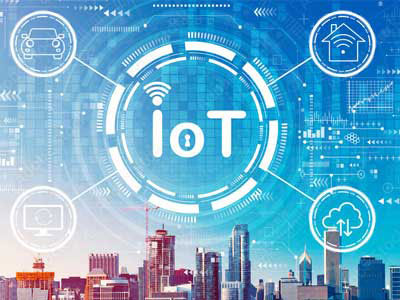What Is The Basic Purpose Of IoT?
Key Takeaway
The basic purpose of IoT, or Internet of Things, is to connect devices to the internet so they can collect, share, and analyze data. This allows for remote monitoring and control, enhancing efficiency and reducing human effort. For example, IoT enables smart home devices to be controlled via smartphones, such as adjusting thermostats or turning on lights. In businesses, IoT can improve operations by monitoring equipment, tracking assets, and optimizing processes. Overall, IoT aims to make everyday tasks easier, provide valuable insights, and improve both personal and organizational productivity.
Core Intentions Behind Using IoT Technology
The core intentions behind using IoT technology are to enhance operational efficiency, improve resource management, and enable real-time monitoring and control. IoT aims to automate routine tasks, reducing the need for manual intervention and minimizing errors. It provides valuable insights through data analytics, helping businesses make informed decisions swiftly. Additionally, IoT enhances connectivity between devices, systems, and people, creating a more integrated and responsive environment. By leveraging IoT, organizations can streamline operations, optimize resource use, and improve overall productivity, ultimately leading to better performance and cost savings.

How IoT Serves Various Stakeholder Needs
IoT technology serves a diverse range of stakeholder needs by providing tailored, data-driven solutions. For businesses, IoT enhances productivity and operational efficiency through real-time data and predictive analytics. This leads to smarter decision-making and streamlined operations, ultimately reducing costs and increasing profits. Consumers benefit from IoT through smart home devices, wearable technology, and connected vehicles, which offer convenience, automation, and improved quality of life. In healthcare, IoT enables remote patient monitoring, allowing for timely interventions and improved patient care. Governments and municipalities leverage IoT for smart city initiatives, enhancing public services, traffic management, and infrastructure maintenance. Each stakeholder group gains unique advantages from IoT’s ability to connect devices, systems, and data, driving innovation and efficiency across various sectors.
You May Like to Read
Fundamental Benefits of IoT Integration
Integrating IoT into operations offers several fundamental benefits. Firstly, it improves efficiency by automating processes and enabling real-time monitoring and control, which reduces downtime and enhances productivity. Secondly, IoT provides valuable insights through data analytics, helping businesses optimize their operations and make better decisions. For example, predictive maintenance can prevent costly equipment failures. Thirdly, IoT enhances safety and security by monitoring environmental conditions and equipment status, thus preventing accidents and failures. Sensors can detect anomalies and trigger alerts before issues escalate. Finally, IoT facilitates resource management, ensuring assets are used effectively and sustainably. This includes optimizing energy usage and reducing waste, which not only cuts costs but also supports environmental sustainability.
IoT's Role in Enhancing Operational Efficiency
IoT plays a critical role in enhancing operational efficiency by automating routine tasks, monitoring equipment performance, and providing real-time data for decision-making. In manufacturing, IoT sensors track machine performance and predict maintenance needs, reducing downtime and extending equipment lifespan. This proactive approach minimizes unexpected failures and production halts. In logistics, IoT devices monitor shipment conditions and optimize delivery routes, ensuring timely and efficient transportation. Real-time tracking allows for quick adjustments to avoid delays and improve customer satisfaction. In agriculture, IoT systems monitor soil conditions and weather patterns, optimizing irrigation and crop management. This leads to better resource utilization and increased crop yields. Across industries, IoT enables smarter, more efficient operations by providing actionable insights and automating processes, resulting in cost savings, improved productivity, and enhanced overall performance. By leveraging IoT technology, businesses can stay competitive and adapt quickly to changing demands.
Preparing Organizations for IoT Adoption
Preparing organizations for IoT adoption involves several key steps. First, businesses need to identify specific goals and use cases where IoT can provide the most value. This includes understanding current operational challenges and how IoT can address them. For instance, if a company faces frequent equipment failures, IoT sensors for predictive maintenance could be beneficial. Next, organizations should develop a clear implementation strategy, which includes selecting the right technologies and partners. This strategy should outline the deployment process, timeline, and expected outcomes. Ensuring data security and privacy is also crucial, as IoT involves collecting and transmitting large amounts of data. Implementing robust cybersecurity measures and compliance with data protection regulations are essential. Finally, businesses should invest in training and development to equip their workforce with the skills needed to manage and leverage IoT technology effectively. This includes both technical training for IT staff and awareness sessions for other employees to understand IoT’s benefits and usage. By following these steps, organizations can smoothly transition to IoT, maximizing its potential to improve efficiency, productivity, and innovation.
Conclusion
Embracing IoT technology promises a smarter, more connected future. By integrating IoT, businesses can achieve greater operational efficiency, make data-driven decisions, and enhance the overall customer experience. IoT also holds the potential to transform industries, from manufacturing and logistics to healthcare and agriculture, driving innovation and competitive advantage. As organizations prepare for IoT adoption, they must focus on strategic planning, security, and workforce readiness to maximize the benefits of this transformative technology. By doing so, they can unlock new opportunities and ensure long-term success in an increasingly connected world.
